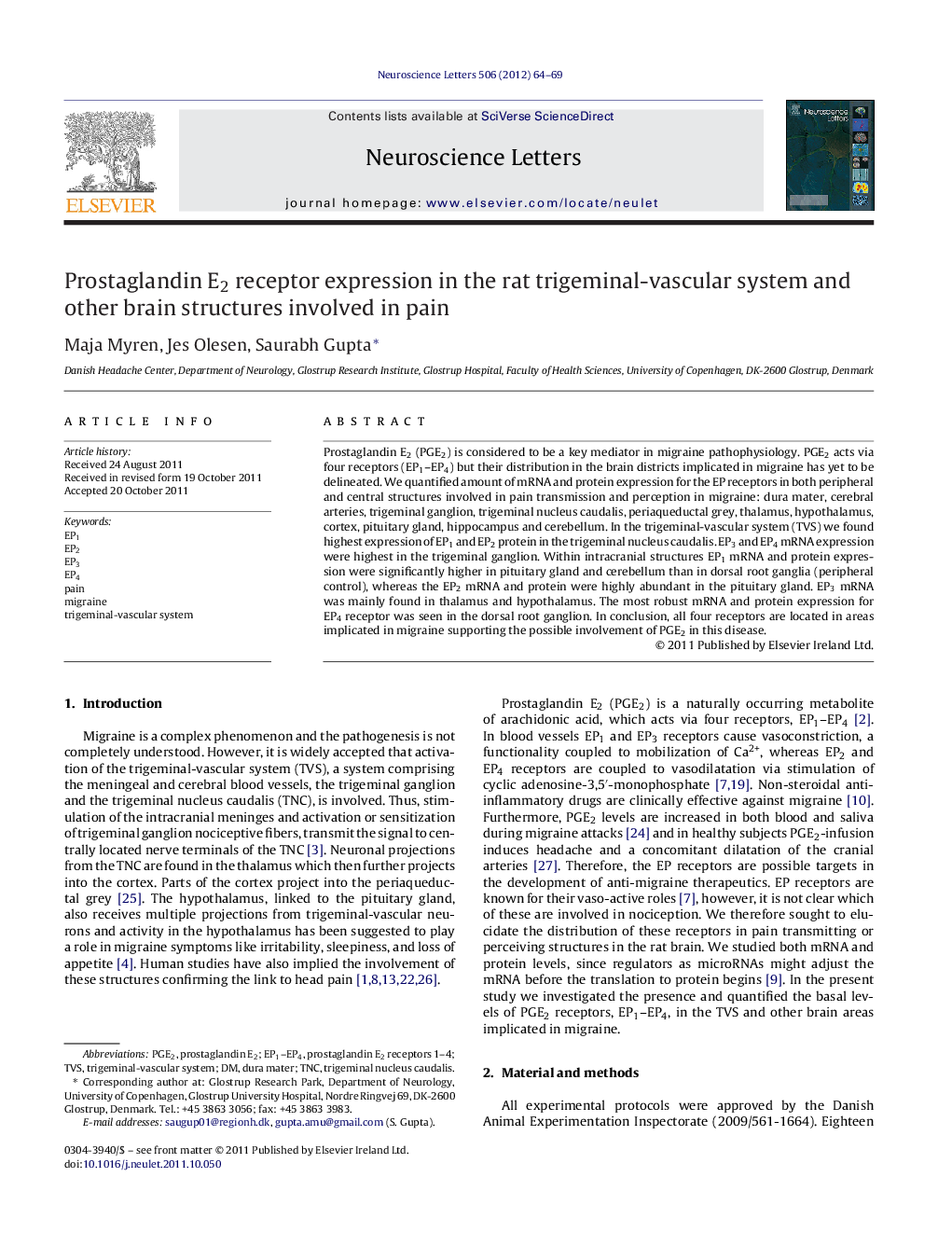| Article ID | Journal | Published Year | Pages | File Type |
|---|---|---|---|---|
| 6284578 | Neuroscience Letters | 2012 | 6 Pages |
Prostaglandin E2 (PGE2) is considered to be a key mediator in migraine pathophysiology. PGE2 acts via four receptors (EP1-EP4) but their distribution in the brain districts implicated in migraine has yet to be delineated. We quantified amount of mRNA and protein expression for the EP receptors in both peripheral and central structures involved in pain transmission and perception in migraine: dura mater, cerebral arteries, trigeminal ganglion, trigeminal nucleus caudalis, periaqueductal grey, thalamus, hypothalamus, cortex, pituitary gland, hippocampus and cerebellum. In the trigeminal-vascular system (TVS) we found highest expression of EP1 and EP2 protein in the trigeminal nucleus caudalis. EP3 and EP4 mRNA expression were highest in the trigeminal ganglion. Within intracranial structures EP1 mRNA and protein expression were significantly higher in pituitary gland and cerebellum than in dorsal root ganglia (peripheral control), whereas the EP2 mRNA and protein were highly abundant in the pituitary gland. EP3 mRNA was mainly found in thalamus and hypothalamus. The most robust mRNA and protein expression for EP4 receptor was seen in the dorsal root ganglion. In conclusion, all four receptors are located in areas implicated in migraine supporting the possible involvement of PGE2 in this disease.
⺠EP1-EP4 were ubiquitously expressed in brain districts implicated in migraine. ⺠EP1 mRNA and protein were highly present in trigeminal nucleus caudalis, cerebellum and pituitary. ⺠EP2 mRNA and protein expression was most abundant in the pituitary gland. ⺠The trigeminal ganglia, thalamus and hypothalamus expressed most EP3 mRNA. ⺠EP4 mRNA and protein expression was high in trigeminal and dorsal root ganglia.
